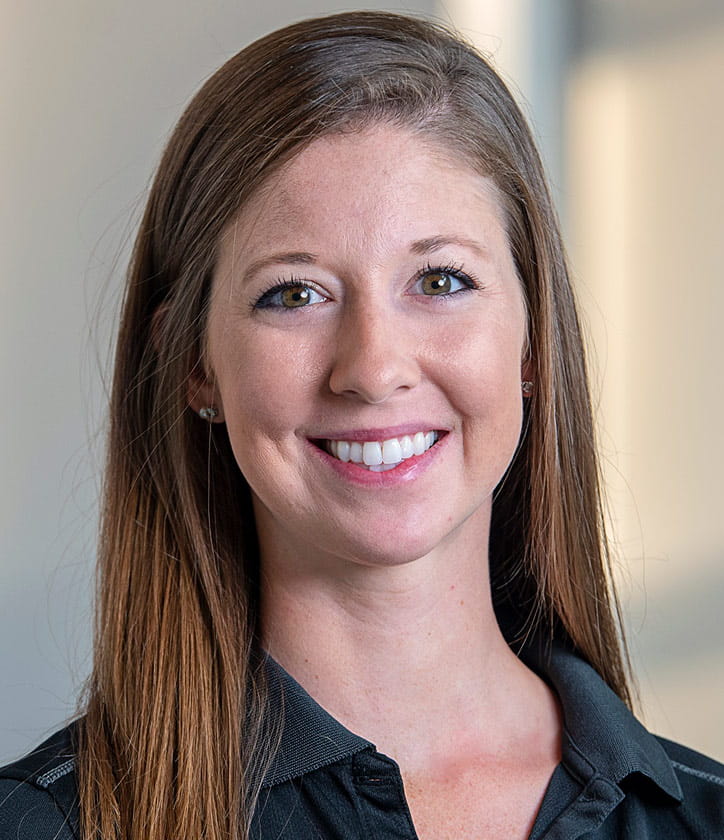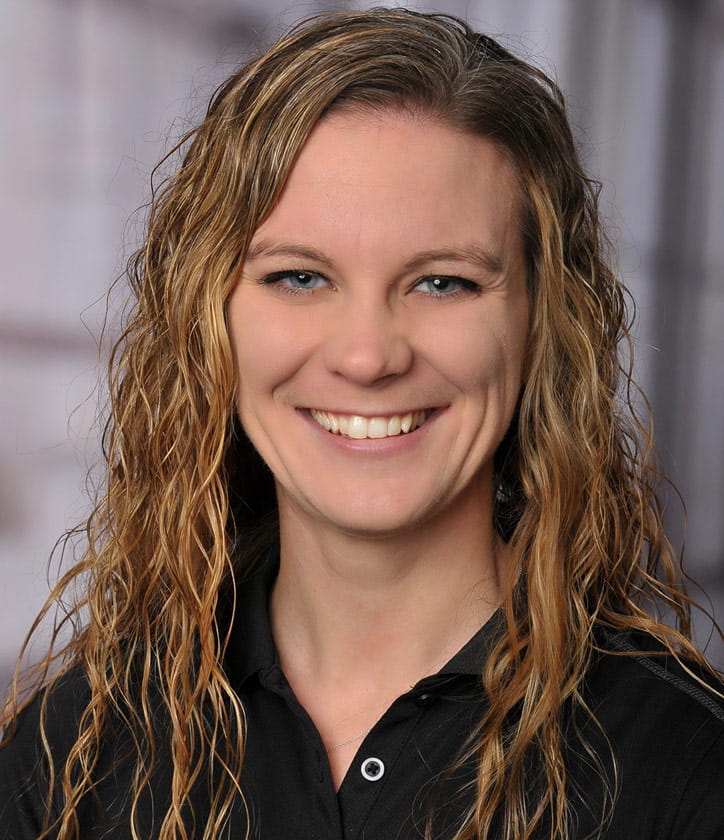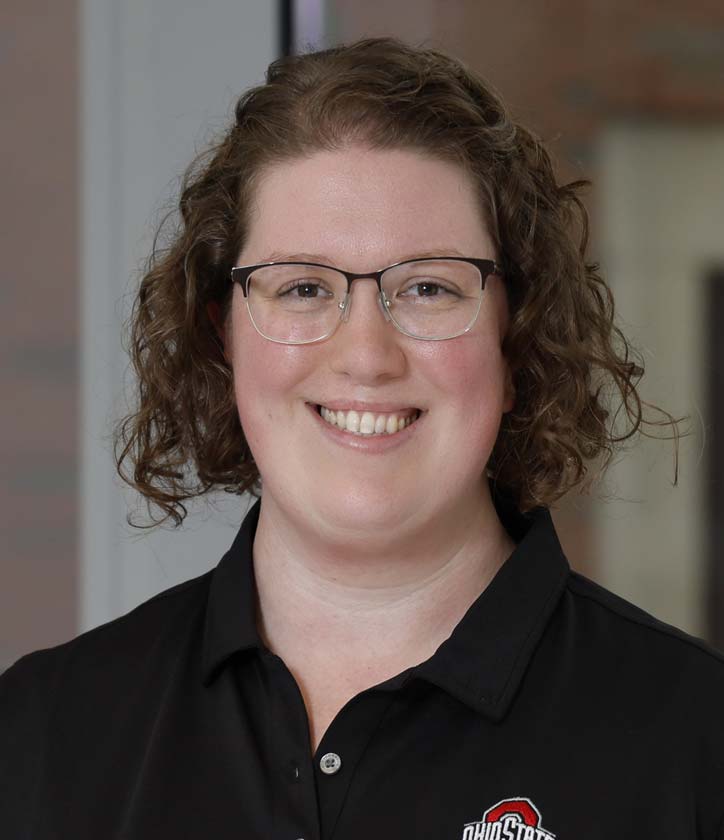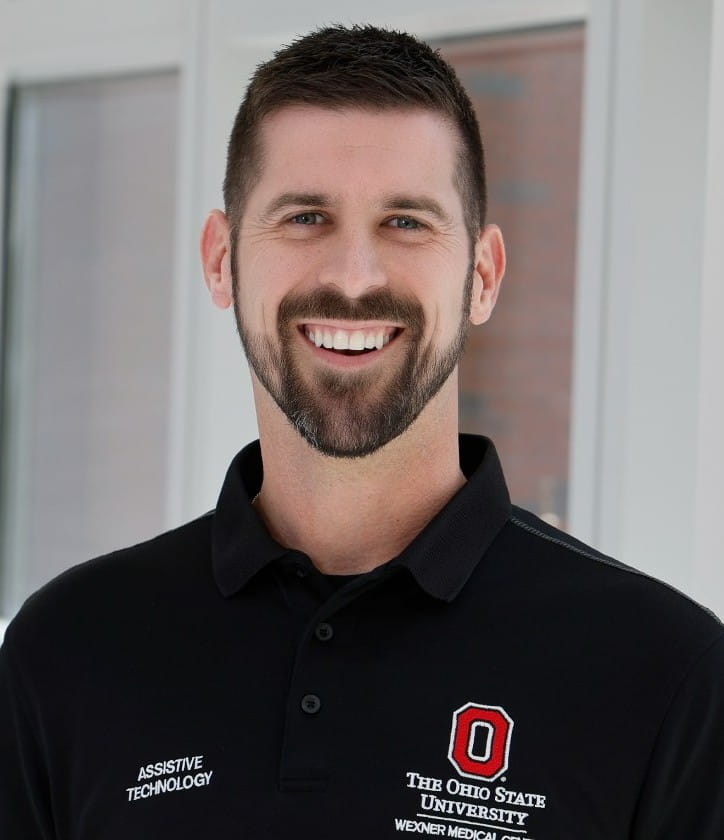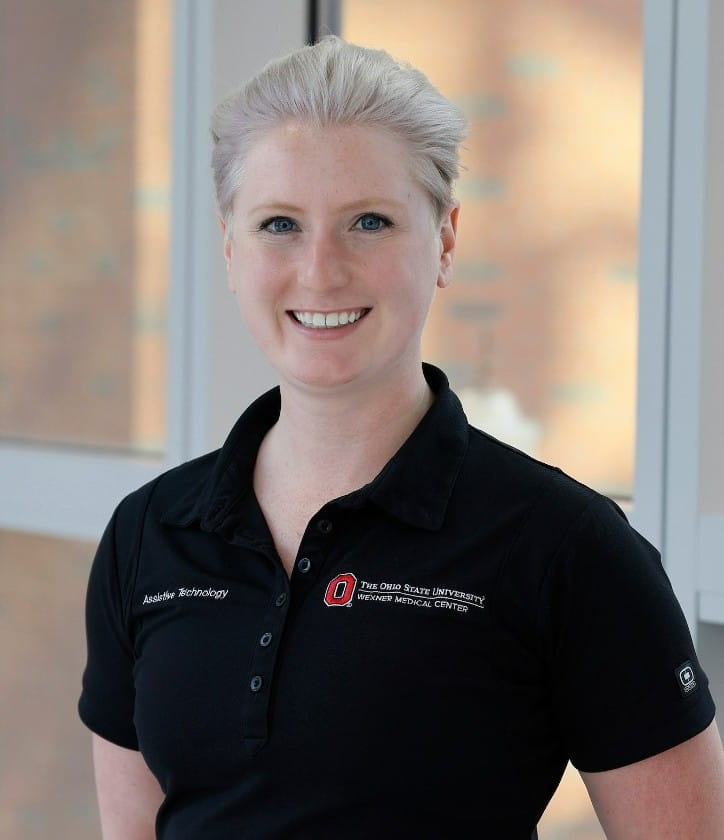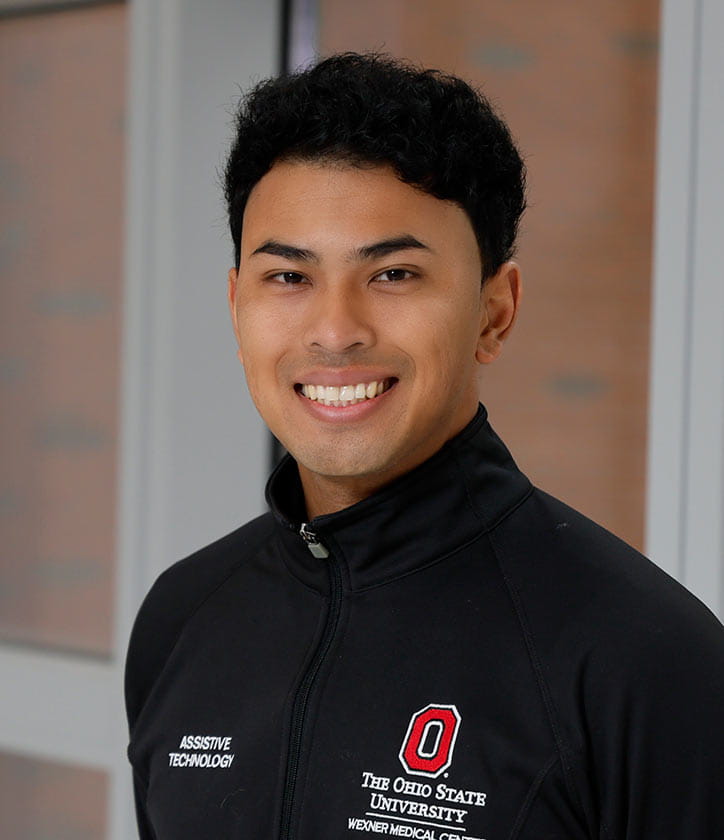The Occupational Therapy Driver Rehabilitation Program at Ohio State’s Wexner Medical Center helps restore mobility to those affected by neurological, orthopedic or developmental conditions, or to those who have experienced age-related changes in function. Our goal is to help you return to safe, independent driving.
Our Patients
We provide driving evaluation and skill development services for:
- Older drivers, including those with early onset dementia, Alzheimer’s disease or Parkinson’s disease
- Drivers with acquired disabilities, including physical or visual impairments or the effects of stroke, brain injury and other conditions
- Novice drivers with diagnoses such a spina bifida, cerebral palsy, autism and attention deficit hyperactivity disorder
Autism and driving: How ASD affects driving, and resources to help
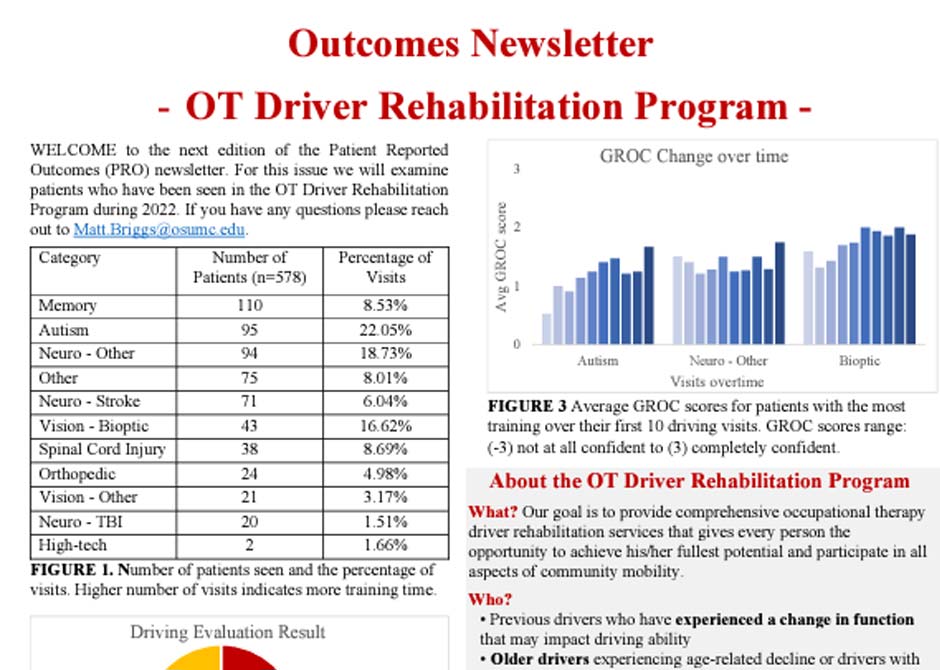
Autism can have a wide range of symptoms that present unique challenges for learning to drive. Typical driver training programs aren’t always equipped to help. Please see information from an OSU Driving specialist.
Read the newsletter
Why choose The Ohio State University Wexner Medical Center?
People of all ages and with diverse medical conditions seek Ohio State for evaluation and training that will enable them to drive more safely. Here’s why:
Personalized Care: You will receive a personal clinical assessment to evaluate changes in physical functioning, vision, perception and processing abilities that could impact driving safety. Assessments are given by a licensed and registered occupational therapist and will lead to an individualized care plan.
Special Services: Our nationally certified driving rehabilitation specialist, who has special training in medical conditions and their implications on driving, does on-the-road assessments.
Accredited Programs: The Ohio State University Wexner Medical Center Rehabilitation Driving Program is licensed by the Ohio Department of Public Safety as a Class D, Disability Driver Training School.
Nation’s Best: Ohio State’s rehabilitation program consistently ranks among the best in the nation. As an academic medical center, Ohio State offers comprehensive medical expertise, the most advanced technologies and treatment techniques, and innovative care backed by research knowledge.
To participate in the program
Please follow these steps in order to participate in the Occupation Therapy Driver Rehabilitation Program:
- Obtain a physician's referral stating "OT driver rehabilitation program" and include all pertinent diagnosis and contact information to be faxed or sent via electronic medical records. We will contact you to schedule the appointment upon receiving the referral.
- A valid driver's license or permit is required for any on-road portion of the program.
- Call if you have any questions about the process.
Our Services
Following your referral to us from your physician, our OT Driver Rehabilitation Program provides the following services:
Bioptic telescopic spectacles allow people with vision impairment to obtain driving licensure even when their visual acuity does not meet normal state standards. Bioptics are spectacles with a small telescope implanted in one or both of the lenses. The telescope is used for brief periods during driving to spot distant targets such as road signs and traffic signals. Individuals with vision loss due to nystagmus, albinism, optic neuropathy macular degeneration and other eye diseases may be candidates for bioptic driving. Candidates are screened by optometrists and fitted with the bioptics prior to entry into the program. Training time varies by patient to prepare for the Ohio BMV driving examination using the bioptic lenses. Drivers with previous experience average 15-20 hours and novice drivers 30-40 hours.
A two to two and a half hour appointment that consists of a clinical evaluation and on-road assessment in a hospital owned vehicle. The clinic portion assesses vision (i.e. visual fields, acuity, depth perception), visual-perceptual skills (i.e. accuracy and timeliness in which the brain understands what the eyes are seeing), physical ability (i.e. reaction time, strength and mobility) and cognitive skills (i.e. attention, decision making, memory). The on-road assessment completes a driving course with a driving rehabilitation specialist. Upon completion of the evaluation, all results and recommendations are shared with the client.
Instruction on how to safely operate a vehicle using vehicle adaptions, compensatory techniques and/or safety procedure training. Vehicle adaptions may include:
- Spinner knob
- Hand controls
- Left foot accelerator
- Turn signal crossover
Preview of assistive devices on our training van before modification of your vehicle. Features on our van include:
- No-effort steering system
- Electronic gas and brake system
- Touch pad static secondary control
- Voice scan in-motion control
Connecting you with community information for:
- Public transportation
- Shuttles
- Senior transit services and more
Your Treatment Team
Our care team evaluates your driving ability and makes recommendations to your referring physician, who makes the final decision to allow or restrict driving. Your team may include:
- Occupational therapists who specialize in improving patients’ ability to complete activities of daily living
- Driving rehabilitation specialists who specialize in driver training for those with disabilities
- Rehabilitation engineers who specialize in determining, implementing and training patients on assistive technology devices, such as wheelchairs, special computer work stations and remote control systems
- Physical therapists who specialize in helping patients achieve maximum strength, balance and mobility, and provide vehicle transfer skills
- Social workers who specialize in the social, emotional and financial needs of families and patients
Additional Resources
Columbus offers several transportation options. View our guide here.
The National Highway Traffic Safety Administration has produced a series of short videos to show how different medical conditions can impact driving. Watch these videos.
For more information of driver rehabilitation, please reference the resources below:


